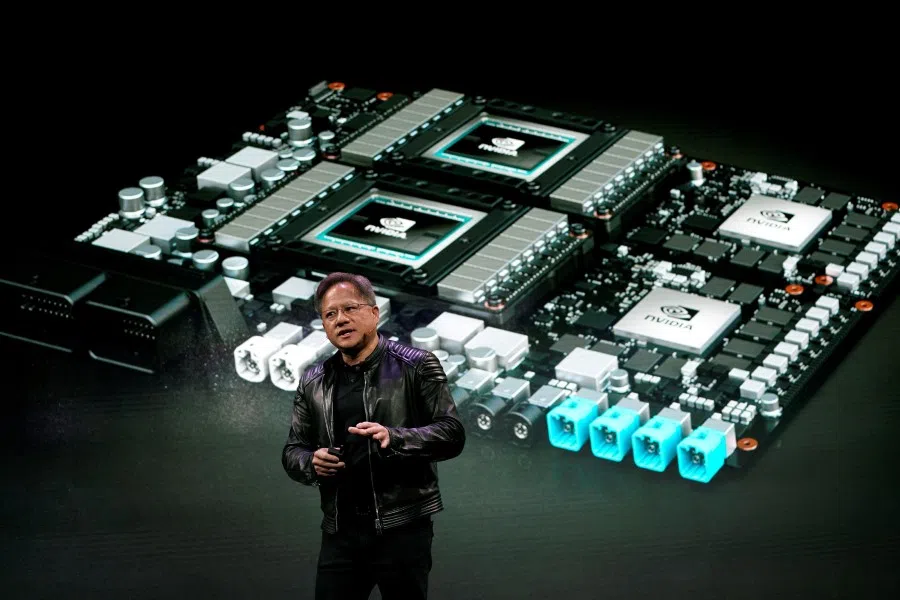The 'adultery' between Silicon Valley and China
Hong Kong commentator Chip Tsao notes the "adulterous" relationship between Silicon Valley tech companies and China, the inevitability of technology transfer, and the US government's naive demand for parity in all its dealings with China.

Former Vice President Joe Biden, now a candidate in the US presidential election, has said that if he is elected, he will do all he can to stop US technology from going to China.
Of course, this is a little ironic coming from Biden; his son Hunter was investing in a company developing facial recognition technology to be used in the Xinjiang region.
... China's research and development progress and high level of government intervention mean that technology approved for transfer to China for civilian use can be restored to military use at any time.
There are one billion mobile phone users in China, and if the US wants to avoid the fate of being a conjoined twin to China in network technology, it will have to conduct immediate separation surgery, which will be technically difficult.
While the US has imposed sanctions on Huawei, and is confident that military technology converted to civilian use will not be reconverted back to military use, China's research and development progress and high level of government intervention mean that technology approved for transfer to China for civilian use can be restored to military use at any time.

The US government has sanctioned 33 Chinese high-tech companies, but many of these companies are clients of Silicon Valley companies. For example, US chipmaker Nvidia has close business links with sanctioned Chinese companies. Nvidia provides graphic processing units (GPUs) for AI companies around the world, and one of its founders is Taiwan-born and US-based Jensen Huang, a specialist in the field.
... it is not up to the federal government to control the interests in technology transactions between the US and China.
Over ten years ago, at least 90% of desktop and portable computers were already using GPUs. One of Nvidia's major clients is SenseTime, which was founded by a team from the faculty of engineering at the Chinese University of Hong Kong (CUHK), led by Professor Tang Xiao'ou. The company was established in Beijing in late 2014, under the full name Beijing SenseTime Technology Development Co., Ltd. And SenseTime's image processing systems are used in facial recognition, autonomous/self-driving vehicles, and augmented reality.
During the Occupy Central movement in Hong Kong in 2014, the Hong Kong police used SenseTime technology for crowd control and facial recognition. Its neural network even allows image resolution to be increased from 4K to 8K.
The technological collaboration between Nvidia and SenseTime also includes self-driving vehicles. SenseTime has been blacklisted by the US government, but Nvidia cannot cancel its longstanding contracts with SenseTime.
This alone is enough to show that it is not up to the federal government to control the interests in technology transactions between the US and China.
The White House is the short and ugly Wu Dalang from the classic Chinese novel The Plum in the Golden Vase, while the US technology sector is Wu's wife, the beautiful and adulterous Pan Jinlian.

In the capitalist free market of the US, the federal government cannot order a large-scale private company to give up its profits for the sake of national security. But China can tap on its centralised power and quietly instruct a seemingly "private" company like Huawei to link up with "techies" in Silicon Valley. For the US, with its belief in a free market, this is a tough problem to solve, like a husband who knows of his wife's sexual liberties but cannot rein it in.
The White House cannot send official representatives or federal investigators to every tech company in Silicon Valley, but China can plant a party secretary in every "private" Chinese company.
This "threesome" between the White House, Silicon Valley and the CCP is ridiculous and complex. The whole of Silicon Valley detests Donald Trump's Republican government. It is no exaggeration to say that half of Silicon Valley is Chinese. The White House is the short and ugly Wu Dalang from the classic Chinese novel The Plum in the Golden Vase, while the US technology sector is Wu's wife, the beautiful and adulterous Pan Jinlian.
And so, the US can only watch as its image gathering technology becomes an accessory to surveillance in Xinjiang and quicker arrests of Uighur people. The White House cannot send official representatives or federal investigators to every tech company in Silicon Valley, but China can plant a party secretary in every "private" Chinese company.
The US government wants parity in all its dealings with China. But China's one-party autocracy will never be the same as the open democracy of the US, nor will China change its system and engage in the "fair competition" that the US one-sidedly wants.
This fact should have been understood from the time of Clinton's presidency, but it seems that this "couple" has not grasped it. After Bush Jr and Obama, the "adultery" between Silicon Valley and China has matured to the point where Pan Jinlian can kick Wu Dalang aside and throw herself at her lover Ximen Qing, and even marry him. What use is Trump's bellyaching?
This article was first published in Chinese on CUP media as "姦情盡現".

![[Big read] Paying for pleasure: Chinese women indulge in handsome male hosts](https://cassette.sphdigital.com.sg/image/thinkchina/c2cf352c4d2ed7e9531e3525a2bd965a52dc4e85ccc026bc16515baab02389ab)



![[Big read] How UOB’s Wee Ee Cheong masters the long game](https://cassette.sphdigital.com.sg/image/thinkchina/1da0b19a41e4358790304b9f3e83f9596de84096a490ca05b36f58134ae9e8f1)